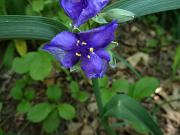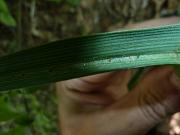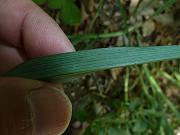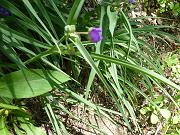Transformational Gardening
June 2011 Foraging Experiences
(Back to:
May 2011 Foraging Experiences)
(Forward to:
July 2011 Foraging Experiences)
June 5, 2011
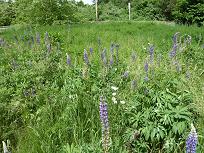
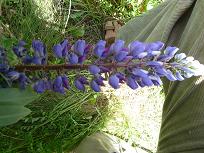 Not far from the Sundial Lupine (Lupinus perennis) that I found just over a
week ago, there was a large clump of Bigleaf Lupine. I was very surprised to find
it here because according to the
USDA Plant Database Advanced Search it is only found North in Coos County and
Southwest in Cheshire County. But I found a lot of it in South Central New Hampshire
(Merrimack County). Maybe it escaped from cultivation.
Not far from the Sundial Lupine (Lupinus perennis) that I found just over a
week ago, there was a large clump of Bigleaf Lupine. I was very surprised to find
it here because according to the
USDA Plant Database Advanced Search it is only found North in Coos County and
Southwest in Cheshire County. But I found a lot of it in South Central New Hampshire
(Merrimack County). Maybe it escaped from cultivation.
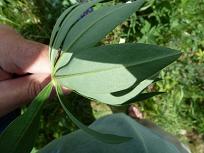
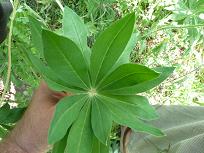 Notice that the number of palmately-divided leaflets can be as many as 11-17 while
the Sundial Lupine will only have 7-11 leaflets. Also, notice that the leaflets
are much larger and have pointier tips.
Notice that the number of palmately-divided leaflets can be as many as 11-17 while
the Sundial Lupine will only have 7-11 leaflets. Also, notice that the leaflets
are much larger and have pointier tips.
June 6, 2011
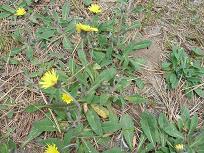
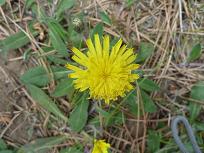 The small height and single flower heads let me know that this is Mouse Ear Hawkweed.
In addition, there are reddish stripes on the outside of the flower head petals. There
is a similar plant known as Large Mouse Ear Hawkweed (Hieracium xflagellare),
but that plant has two to 4 flowers heads (rarely 1) per flower stem and the blacks
of the leaves are not so white wooly. The backs of these leaves are not quite as
white wooly as I would have liked to confirm the identification, but everything else
indicates that this is Mouse Ear Hawkweed.
The small height and single flower heads let me know that this is Mouse Ear Hawkweed.
In addition, there are reddish stripes on the outside of the flower head petals. There
is a similar plant known as Large Mouse Ear Hawkweed (Hieracium xflagellare),
but that plant has two to 4 flowers heads (rarely 1) per flower stem and the blacks
of the leaves are not so white wooly. The backs of these leaves are not quite as
white wooly as I would have liked to confirm the identification, but everything else
indicates that this is Mouse Ear Hawkweed.
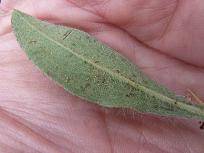
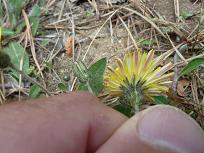
June 7, 2011
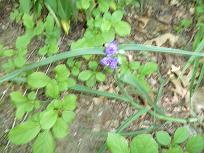
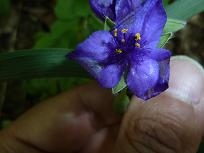 The great news is that there are only two species of the Tradescantia genus in
New Hampshire. The other species is the Virginia Spiderwort (Tradescantia
virginiana). Virginia Spiderwort has hairy flower stems (peduncles) and hairy
sepals, while the Smooth Spiderwort has no hairs on the flower stems and only
occasional hairiness on the tips of the sepals. You can see hairs on the tips of
the sepals in the 2nd row of pictures.
The great news is that there are only two species of the Tradescantia genus in
New Hampshire. The other species is the Virginia Spiderwort (Tradescantia
virginiana). Virginia Spiderwort has hairy flower stems (peduncles) and hairy
sepals, while the Smooth Spiderwort has no hairs on the flower stems and only
occasional hairiness on the tips of the sepals. You can see hairs on the tips of
the sepals in the 2nd row of pictures.
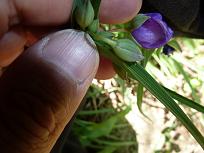
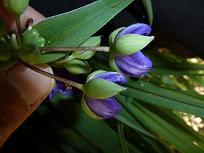
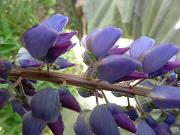
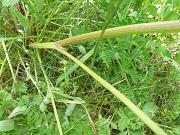
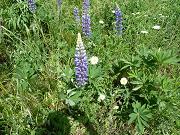
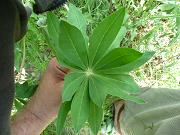
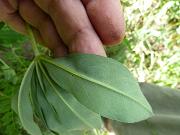
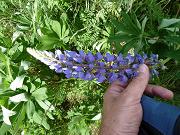
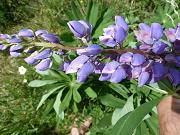
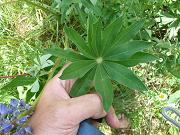

 Not far from the Sundial Lupine (Lupinus perennis) that I found just over a
week ago, there was a large clump of Bigleaf Lupine. I was very surprised to find
it here because according to the
USDA Plant Database Advanced Search it is only found North in Coos County and
Southwest in Cheshire County. But I found a lot of it in South Central New Hampshire
(Merrimack County). Maybe it escaped from cultivation.
Not far from the Sundial Lupine (Lupinus perennis) that I found just over a
week ago, there was a large clump of Bigleaf Lupine. I was very surprised to find
it here because according to the
USDA Plant Database Advanced Search it is only found North in Coos County and
Southwest in Cheshire County. But I found a lot of it in South Central New Hampshire
(Merrimack County). Maybe it escaped from cultivation.
 Notice that the number of palmately-divided leaflets can be as many as 11-17 while
the Sundial Lupine will only have 7-11 leaflets. Also, notice that the leaflets
are much larger and have pointier tips.
Notice that the number of palmately-divided leaflets can be as many as 11-17 while
the Sundial Lupine will only have 7-11 leaflets. Also, notice that the leaflets
are much larger and have pointier tips.








 The small height and single flower heads let me know that this is Mouse Ear Hawkweed.
In addition, there are reddish stripes on the outside of the flower head petals. There
is a similar plant known as Large Mouse Ear Hawkweed (Hieracium xflagellare),
but that plant has two to 4 flowers heads (rarely 1) per flower stem and the blacks
of the leaves are not so white wooly. The backs of these leaves are not quite as
white wooly as I would have liked to confirm the identification, but everything else
indicates that this is Mouse Ear Hawkweed.
The small height and single flower heads let me know that this is Mouse Ear Hawkweed.
In addition, there are reddish stripes on the outside of the flower head petals. There
is a similar plant known as Large Mouse Ear Hawkweed (Hieracium xflagellare),
but that plant has two to 4 flowers heads (rarely 1) per flower stem and the blacks
of the leaves are not so white wooly. The backs of these leaves are not quite as
white wooly as I would have liked to confirm the identification, but everything else
indicates that this is Mouse Ear Hawkweed.

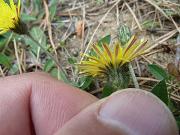
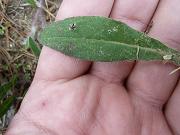
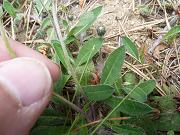
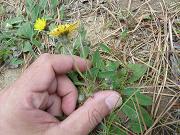
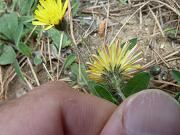
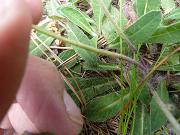

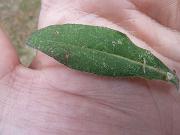

 The great news is that there are only two species of the Tradescantia genus in
New Hampshire. The other species is the Virginia Spiderwort (Tradescantia
virginiana). Virginia Spiderwort has hairy flower stems (peduncles) and hairy
sepals, while the Smooth Spiderwort has no hairs on the flower stems and only
occasional hairiness on the tips of the sepals. You can see hairs on the tips of
the sepals in the 2nd row of pictures.
The great news is that there are only two species of the Tradescantia genus in
New Hampshire. The other species is the Virginia Spiderwort (Tradescantia
virginiana). Virginia Spiderwort has hairy flower stems (peduncles) and hairy
sepals, while the Smooth Spiderwort has no hairs on the flower stems and only
occasional hairiness on the tips of the sepals. You can see hairs on the tips of
the sepals in the 2nd row of pictures.

